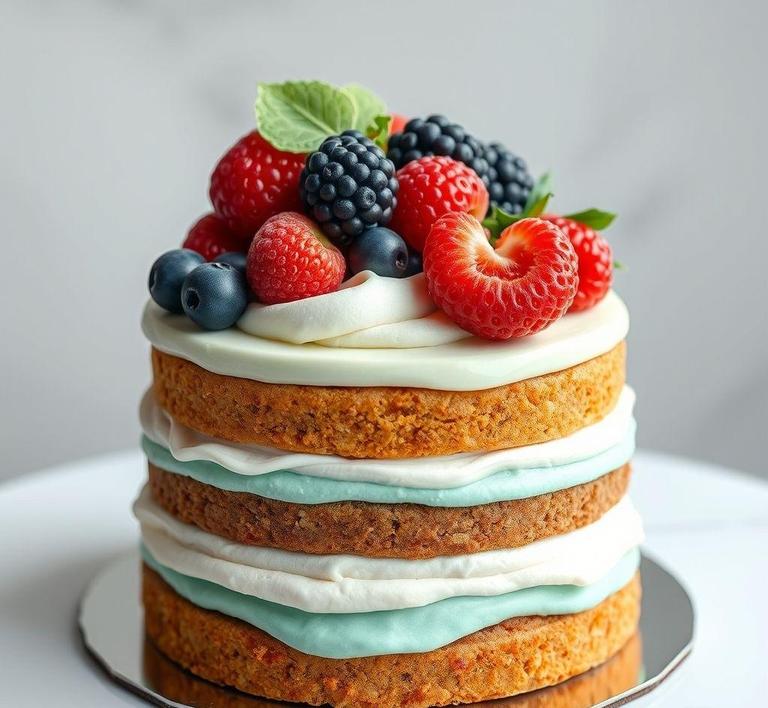If you’ve ever made a cake ahead of time and found yourself needing to store it for a few extra days, refreezing cake layers can be a game-changer. While it might sound tricky, with the right steps, you can freeze and refreeze cake layers without losing their deliciousness. Whether you’re trying to preserve a cake for a special occasion or just want to have a head start on your baking project, this guide will walk you through how to properly freeze and refreeze your cake layers, ensuring they stay moist, flavorful, and ready to be assembled when you’re ready!
Can You Refreeze Cake Layers?

Yes, you can refreeze cake layers-but with important caveats. Cake, unlike some other foods, is relatively forgiving when it comes to freezing and thawing, particularly if it’s handled with care. However, the ability to refreeze successfully hinges on several factors: the type of cake, how it was thawed, and how much time it spent at room temperature.
If your cake layers were thawed in the refrigerator and not at room temperature, they can be safely refrozen. This is because the cold, consistent temperature of the refrigerator prevents the growth of harmful bacteria that thrive in warmer conditions. However, if the layers were left out at room temperature for more than two hours (or one hour in warmer climates), refreezing is not advisable due to food safety risks.
Another consideration is the type of cake. Dense cakes like pound cake or butter cake tend to withstand freezing and refreezing better than delicate sponge or chiffon cakes, which may crumble or dry out after multiple freeze-thaw cycles.
How To Refreeze Cake Layers?
Refreezing cake layers requires meticulous attention to wrapping and storage to maintain their integrity. Here’s a step-by-step guide:
-
Check the Thawing Method:
Ensure the cake layers were originally thawed in the refrigerator and have not sat out too long at room temperature. If they were exposed to ambient temperatures for too long, refreezing is not safe.
-
Cool the Layers Completely:
If you’ve worked with the cake after thawing-say, trimming or leveling-make sure the layers are completely cool before attempting to refreeze. Trapped moisture can cause ice crystals, which degrade the texture.
-
Wrap Each Layer Tightly:
Use a double-layered method for best results. First, wrap each cake layer tightly in plastic wrap to prevent freezer burn. Then, cover the wrapped layer in aluminum foil or place it in a zip-top freezer bag with as much air removed as possible. A vacuum sealer works wonders here for long-term storage.
-
Label and Date:
Always mark the date of refreezing on your packages. This helps you keep track of storage times and ensure quality.
-
Use Quickly:
While a single freeze-thaw-refreeze cycle is generally okay if done properly, repeated cycles should be avoided. Try to use the refrozen cake within 2 to 3 weeks to preserve the best quality.
Quality Impact
The elephant in the room when it comes to refreezing is quality degradation. Even if refreezing is technically safe, it can still affect the flavor, texture, and moisture of your cake.
Moisture Loss: The biggest risk is dryness. Each freezing and thawing cycle draws out moisture, especially if the cake isn’t tightly wrapped. This can lead to a crumbly, less pleasant texture, particularly around the edges.
Texture Changes: Cakes with a high-fat content or delicate crumb structure are more vulnerable. You might notice that sponge cakes become a little rubbery or dense upon refreezing. The delicate air bubbles that give cake its soft texture can collapse when subjected to ice crystal formation.
Flavor Absorption: Another subtle but important concern is freezer odor. Cake layers, especially those stored without an airtight seal, can absorb flavors from surrounding foods, leading to a slightly off taste.
That said, when refreezing is done right-with airtight packaging, careful timing, and proper thawing methods-the impact can be minimal, especially if the cake will be frosted or soaked later on.
Yes, you can refreeze cake layers, but it must be done thoughtfully and selectively. The safety of refreezing hinges on proper storage, the initial thawing method, and the type of cake involved. While a single refreeze won’t necessarily ruin your baked masterpiece, it may cause some subtle changes in texture and flavor.
For best results, consider refreezing only those layers that you know will be used in a frosted, filled, or moistened cake, where any slight imperfections can be masked. When executed with precision, refreezing cake layers can be a baker’s secret weapon-offering flexibility and minimizing waste without sacrificing quality.
Is It Safe To Refreeze Cake Layers?
Refreezing cake layers can be safe, but only under specific conditions. The safety and quality of refrozen cake largely depend on how the cake was stored, thawed, and the time it spent at room temperature during the process.
From a food safety perspective, cake layers that have been thawed in the refrigerator and kept cold (below 40°F or 4°C) can generally be refrozen without posing a significant risk. The cold temperature limits bacterial growth, making the layers safe for another stint in the freezer.
However, if the cake layers were thawed at room temperature or left out for more than two hours (or one hour in hot weather), bacteria can begin to multiply quickly. In such cases, refreezing is not advisable due to the risk of foodborne illness.
On the quality side, refreezing cake layers can slightly compromise texture. The structure of the cake, once frozen and thawed, becomes more delicate due to moisture migration and ice crystal formation. A second freeze can exacerbate this, potentially resulting in a drier or slightly crumbly consistency. That said, with careful handling, many bakers find the difference negligible-especially if the layers are moistened with simple syrup or used in a frosted, layered cake where additional textures and flavors mask any minor degradation.
Signs That Cake Layers Should Not Be Refrozen
Before you reach for the freezer again, inspect your cake layers carefully. Here are red flags that indicate refreezing is not a good idea:
- Off Smell: Any sour, musty, or unpleasant aroma is a clear sign that the cake is no longer safe to eat, let alone refreeze.
- Sticky or Slimy Texture: A tacky or overly moist surface can indicate spoilage or bacterial growth.
- Mold Spots: Even a tiny speck of mold means the whole batch is compromised. Mold roots can penetrate deeper than they appear, especially in porous baked goods.
- Excessive Dryness: If the cake has already lost a significant amount of moisture during its first thaw, refreezing may result in an unpleasantly dry, stale product.
- Frosting or Filling Breakdown: If your cake layers were frosted or filled before freezing and the thaw caused separation, curdling, or weeping (especially with dairy-based frostings), these components won’t fare well through another freeze.
Common Refreezing Mistakes
Avoiding common pitfalls can greatly increase the chances of successfully refreezing cake layers:
- Refreezing After Room-Temp Thaw: As noted earlier, this is the biggest safety hazard. Always thaw in the refrigerator if there’s any chance you may refreeze.
- Not Wrapping Properly: Exposure to air causes freezer burn and moisture loss. Use multiple layers-plastic wrap followed by foil or an airtight container.
- Skipping Labeling: Always label with the date of initial freezing and note that it has been thawed once. This avoids multiple freeze-thaw cycles, which can severely compromise quality.
- Freezing Frosted Layers: While buttercream can sometimes survive freezing, frostings with cream cheese, custards, or whipped cream may not. These can break down or develop ice crystals that ruin texture upon thawing.
- Refreezing After Too Much Time: Even refrigerated thawed cakes should ideally be refrozen within 24-48 hours. The longer they sit, the more the quality declines.
Tips And Tricks
To preserve both safety and deliciousness, follow these practical strategies:
- Use a Simple Syrup: Before freezing or refreezing, brush the layers with a light sugar syrup. This locks in moisture and prevents the cake from drying out.
- Flash Freeze First: Place cake layers (wrapped in parchment) on a tray and freeze until solid before wrapping tightly. This prevents smushing and preserves the cake’s shape.
- Double-Wrap with Care: First wrap the layer in plastic wrap, then in aluminum foil, or place it in a freezer-safe, airtight container. This double-barrier protects from freezer odors and dehydration.
- Label Everything: Include both the freeze and refreeze dates. Limit total freezer time (including the second freeze) to about three months for best results.
- Thaw Gradually: Always thaw in the fridge overnight. Never rush the process with heat or room temperature methods-these introduce risk and dry out the cake.
Conclusion
Refreezing cake layers isn’t an ideal practice, but it can be done safely and successfully with careful attention to handling, storage, and thawing techniques. Whether you’ve overestimated how many layers you need or are preserving a baked-ahead masterpiece, knowing the right way to refreeze allows you to reduce waste and maintain quality. Just remember: safety first, moisture matters, and always respect the fragility of cake. With these principles in hand, your baking will not only be delicious-it’ll also be smartly managed from freezer to fork.


